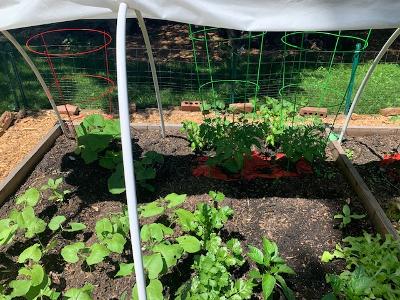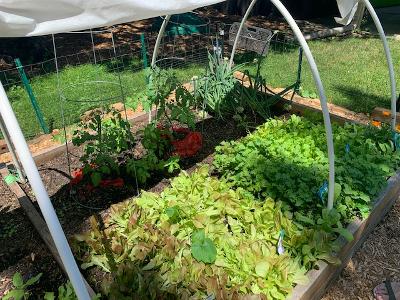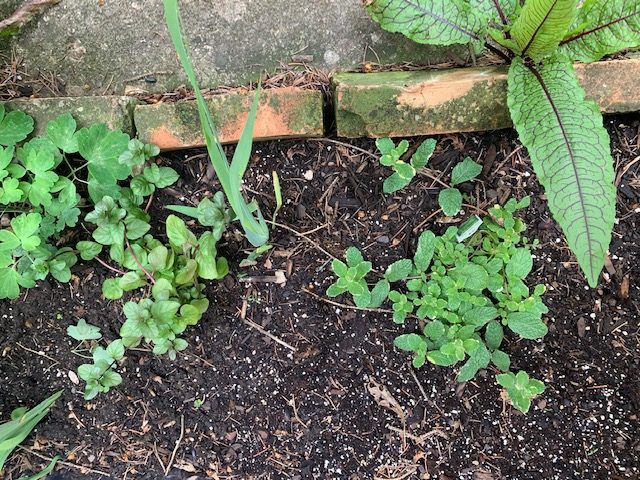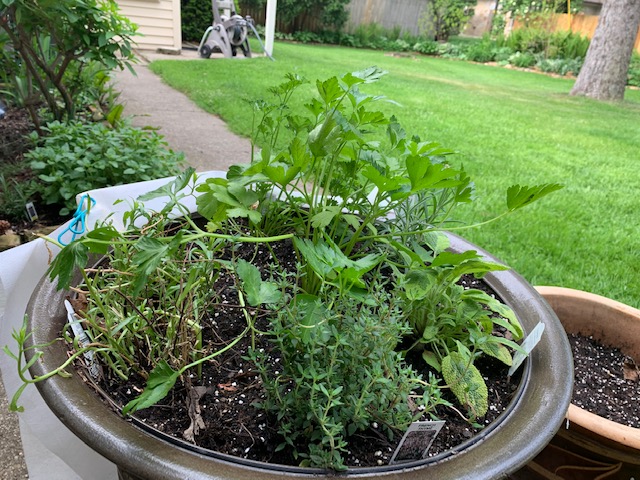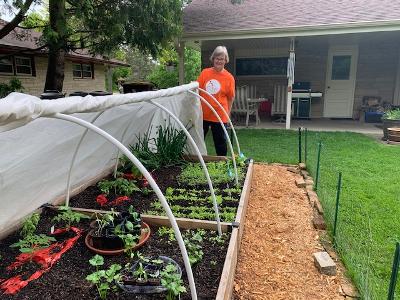
Written by Hippo (a hippopotamus) and Al (a bird)
Before getting to the garden, I want to tell you a little story about Mary and her husband, Ed. After cutting down a black walnut tree in their yard, they were planning to have the stump removed, but the grandchildren had other ideas for it. “The little ones dance and sing on the stump – and all sorts of imaginary play . . .” Here is the wonderful walnut stage.
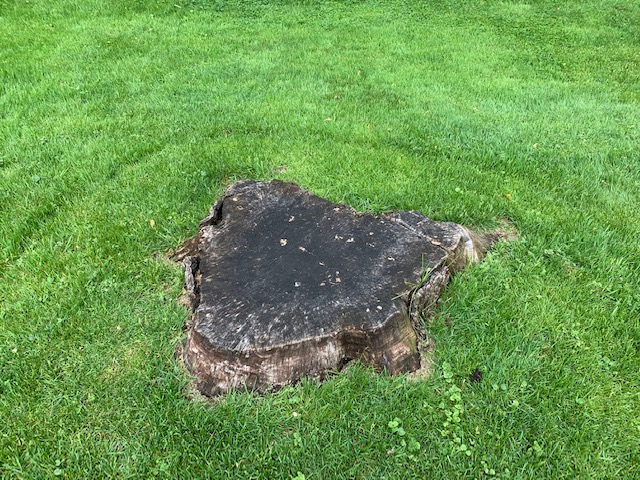
The garden and the entire yard, from the flowering dogwood in front to the parsley and fennel planted to share with swallowtails, are beautiful and welcoming. Sometimes the caterpillars don’t share and then Mary grows butterflies instead of fennel. The raised bed and various pots have been necessary due to the black walnut trees which make it hard to grow things. https://www.extension.iastate.edu/news/2005/jul/070701.htm. Tomatoes and Italian green beans have been a challenge in years past. So far, the tomatoes are looking strong and healthy, but pill bugs are eating the beans.
Mary learned by helping her immigrant grandparents in the garden. She came back to it when she and Ed bought their first house and now she is addicted.
I like growing my own vegetables and having fresh produce in summer. It’s my happy place.
Mary
Every morning, I go out to the garden and see what’s going on. It’s a miracle. In Wisconsin, we just appreciate the summers and the springs and falls when things are so beautiful because winter denies us that beauty.
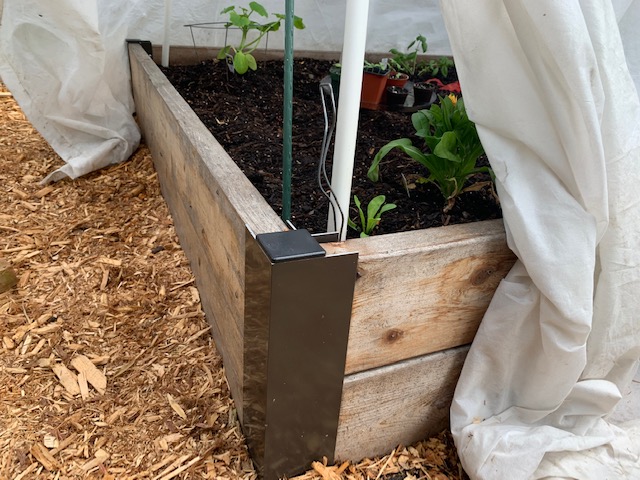
The raised bed is 5’X12′ (divided in the center at 6′) and 12″ deep, using two 2X6 cut cedar boards in each section. Mary uses these sturdy metal corners https://www.gardeners.com/buy/raised-bed-corners-set-of-2/8609669.html to hold everything together.
Here’s what’s growing within the bed: Italian beans, tomatoes, basil, zucchini, lettuce, onions, celery root, calendula, and patty pan squash. Mary will leave a few lettuce plants to shoot up because they’re so comical and pretty to look at and they add some garden design. In addition, all sorts of herbs grow in pots and all around the yard, which is also full of flowers of many kinds – columbine, bleeding hearts, lingularia, sweet woodruff – my favorite – and many more! All of the plants other than the vegetables and the bleeding hearts have come from the gardens of friends and neighbors, or as Mother Nature’s volunteers.
Helpful tip from Mary: Freeze whole tomatoes in a plastic bag. If you run them under hot water when they are frozen, the skin will peel right off and you can chop them up for sauces and stews. You can have garden tomatoes all year long.
Mary sent us home with a lingularia plant. When it blooms late in the summer, monarchs will come to drink its nectar. An abundance of nectar sources is especially important for migrating monarchs. They must build up their fat reserves to sustain them through the long and tiring journey to Mexico.
Nectar corridors are a series of habitat patches containing plants that flower at the appropriate times during the spring and fall migrations. These patches provide stopping-off points for the migrating butterflies to refuel and continue their journey. Having these islands of nectar sources is particularly important within large areas of urban and agricultural development. The discontinuous patches of nectar sources are “corridors” that monarchs will follow, like stepping-stones across a stream to complete their migration.
https://www.fs.fed.us/wildflowers/pollinators/Monarch_Butterfly/habitat/
Next time you pass Ed and Mary’s home on 117th street, you will know a little bit about the people, the plants and the creatures who live there. It’s Mary’s happy place where food is grown, butterflies find food for their journey south, and children sing and dance on the walnut stump.
**************
Have you read The True Adventures of Hippo and Al yet? It’s an exciting tale filled with undercover disguises, menacing giants, and feats of great bravery . . . “by me,” said Al – “the bravery part, that is.” Read it here.


